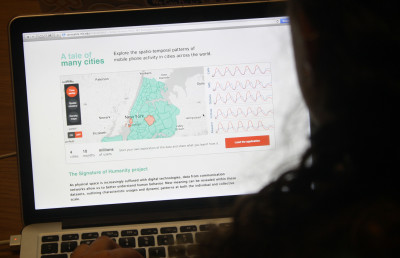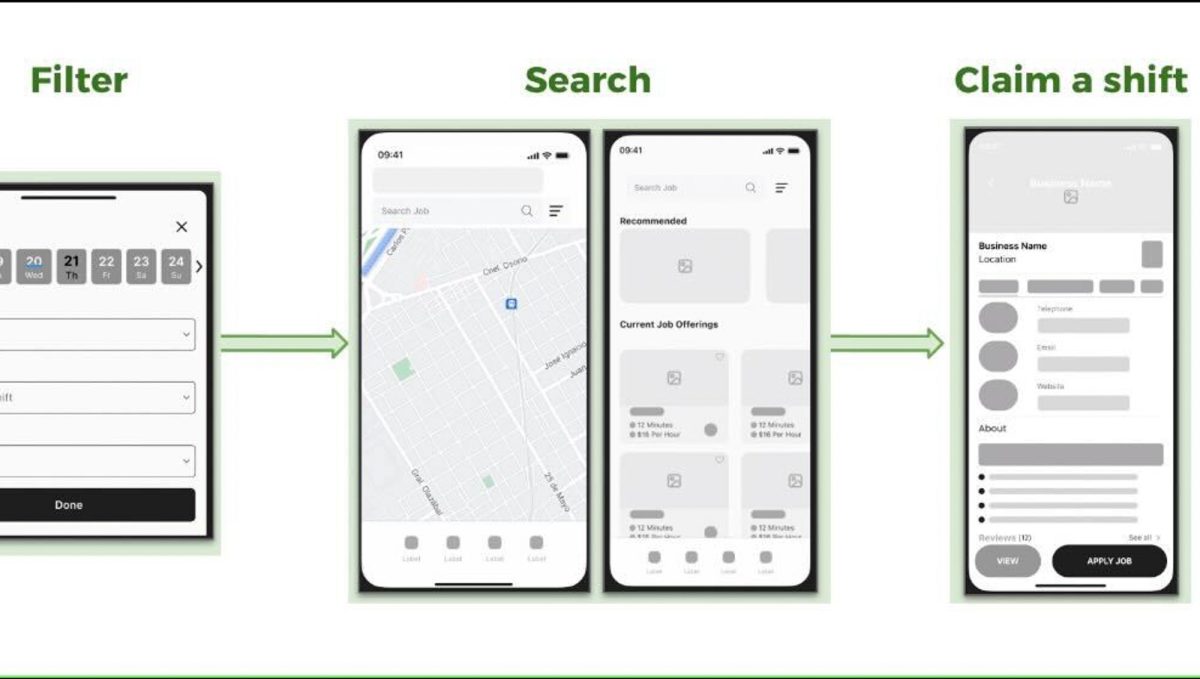
At first blush, it sounds semi-dystopian: in light of recent concerns about the collection of personal data, an app that tracks and conglomerates figures of mass cell phone usage in major world cities may raise more than a few eyebrows.
A moment of digging, however, dispels any initial whiffs of Orwellian doom. Many Cities, an app developed by researchers at the Massachusetts Institute of Technology’s SENSEable City Laboratory in collaboration with telecommunications provider Ericsson, aims not to orchestrate world domination so much as untangle proverbial wires and provide a large-scale, holistic view of what it’s like to connect and communicate in an urban landscape.
An interactive tool designed to analyze trends in cell phone use around the world, Many Cities’ data is entirely made up of broad, anonymous brushstrokes. Utilizing satellite records, the SENSEable City Lab and Ericsson looked at things like call frequency, SMS usage, and data traffic as they spread across four major world cities: London, New York, Los Angeles and Hong Kong.
The researchers then aggregated this massive set of raw data and formed it into an attractive, relatively breezy and user-friendly visual rendition. In its current incarnation, Many Cities consists of four interactive maps, each of which breaks down its larger city into smaller, clickable parts with relevant graphs and dataset trends displayed on the right hand side of the interface.
While Many Cities is now readily available to use for anyone with Internet access, social science-bent or not, this was not always the case. In its embryonic stages, Many Cities was intended for private use, available to researchers and policymakers in whose work these types of trends play a vital role. Eventually, however, many on the developing team saw reason to make the app accessible to the greater public.
“The idea stemmed from an observation — cell phones now live with us, they have a symbiotic relation with our bodies,” said Carlo Ratti, the director of the SENSEable City Lab and a key contributor to Many Cities. “Using aggregated data from cellphone networks, we can better understand our cities and the ways we inhabit them.”
Sebastian Grauwin, a freelance research consultant also involved in the SENSEable City Lab, echoed Ratti’s sentiments.
“One important aspect is that it can allow people to investigate how people behave in a city,” Grauwin said. “I think it’s interesting to show more and more through this type of data how dynamics impact the places [in which] we live.”
Grauwin sees the project as a tool for comparison, valuable in obvious ways for whom it was initially developed, but also for a public that is interested in both the ways we speak to one another and the nature of homogeneity in an increasingly global landscape.
The data appears to be grouped by continent. In the U.S., for instance, young adults tend to use SMS more frequently at night, a trend not heavily supported by data gathered from London or Hong Kong. In London’s residential areas, usage decreases in the evening, while in Hong Kong, it steadily increases throughout the entire day.
A look at the maps, guided by Grauwin, reveals a startling trend. In the more residential parts of the cities, the data is idiosyncratic. Frequency of use and peak activity times are unpredictable, with any number of factors playing a hand.
However, when the focus is narrowed around the city centers, the cities are all but indistinguishable. People, it turns out, have similar cell phone habits in areas characterized by increased financial and corporate activity — they send calls and texts with alarmingly similar timeframes and frequencies. But what does this mean, exactly?
To Grauwin, it signals our shift toward a more globalized landscape in which the 9-to-5 grind becomes an international standard. Ultimately, though, all we have are figures.
Katherine Einstein, a professor of political science in Boston University’s College of Arts and Sciences, warned against excessive squinting and shuffling to find correlations between raw data and larger social trends. While she acknowledged the considerable value of a project like Many Cities, praising its transparency and user-friendly accessibility, she also felt cautionary toward “data mining,” where researchers collect massive amounts of data in which they may consider correlation to be causation.
Perhaps one way to combat the urge to become too zealous in statistical assessment and begin mining data is Many Cities’ planned expansion to other major cities. Their expanded canvas could help to zero in on genuine worldwide trends.
Grauwin did not specify which cities the project had pinned for expansion, but he did say that increased coverage was in its future, hoping to allow people all over the world to better understand the people within the landscapes that they’re traversing.
“At the lab,” Ratti said, “we are particularly interested in how data can empower citizens to make better choices.”





















































































































